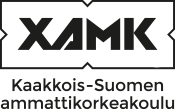Business process development (5 cr)
Code: MB00ED81-3003
General information
Enrollment
10.01.2022 - 23.01.2022
Timing
03.01.2022 - 06.05.2022
Number of ECTS credits allocated
5 op
Virtual portion
3 op
RDI portion
3 op
Mode of delivery
40 % Contact teaching, 60 % Distance learning
Campus
Kouvola Campus
Teaching languages
- English
Degree programmes
- Master's Degree Programme in International Business Management
Teachers
- Jagat Kunwar
Teacher in charge
Jagat Kunwar
Groups
-
MBKV22KYInternational business management, master studies
Objective
You learn to identify the components of business modelling.
You are able to make a value proposition and know how to deliver it.
You learn to analyze business platforms.
You are able to identify and utilize key business model patterns and pricing models.
Content
What are the components of business modelling (e.g. – BMC, Lean Canvas)?
How to make a value proposition and how to deliver it?
What are the main business platforms?
What are the key business model patterns and pricing models?
Materials
Lecture notes and other readings provided by the instructor
Following text-books are recommended to deepen understanding on the subject matter:
(1) Gassmann, O., Frankenberger, K. & Csik, M., 2015. The Business Model Navigator. Harlow, England: Pearson.
(2) Johnson, G., Scholes, K. & Whittington, R., 2008. Exploring Corporate Strategy: Text & Cases. 8th ed. Harlow, England: Pearson Education Limited.
(3) Osterwalder, A., Pigneur, Y., Etiemble, F. & Smith, A., 2020. The Invincible Company. Hoboken, New Jersey: John Wiley & Sons, Inc.
(4) Osterwalder, A. et al., 2014. Value Proposition Design. Hoboken, New Jersey: John Wiley & Sons, Inc.
(5) Parker, G. G., Alstyne, M. W. V. & Choudary, S. P., 2018. Platform Revolution: How networked markets are transforming the economy and how to make them work for you. New York: W. W. Norton & Company.
(6) Rogers, D. L., 2016. The Digital Transformation Playbook: Rethink your business for the digital age. New York: Columbia Business School Publishing.
Teaching methods
At the end of the study unit, students should be able to:
(1) Use strategic management tools to analyze their business
(2) Recognize and respond to challenges due to digital disruption
(3) Identify and reconfigure components of the business model
(4) Design customized value propositions for customers
(5) Plan and develop a business idea in digital platforms
Employer connections
You have to:
(1) analyze the general business environment of your chosen organization using strategic management tools
(2) develop a value proposition for your chosen organization concretely
(3) develop platform strategy for your chosen organization
Exam schedules
There will be approximately 5 specific take-away tasks that students must complete after the end of each themes (each worth 10%). At the end, there will be an additional report based on the five tasks already completed worth 50%. The exact deadline will be decided during the classes.
Student workload
There will be approximately 5 specific take-away tasks that students must complete after the end of each themes (each worth 10%). At the end, there will be an additional report based on the five tasks already completed worth 50%. The exact deadline will be decided during the classes.
Further information
The course consists of F2F meetings. Only some sessions can be implemented virtually.
Evaluation scale
1-5
Assessment methods and criteria
There will be approximately 5 specific take-away tasks that students must complete after the end of each themes (each worth 10%). At the end, there will be an additional report based on the five tasks already completed worth 50%. The exact deadline will be decided during the classes.
